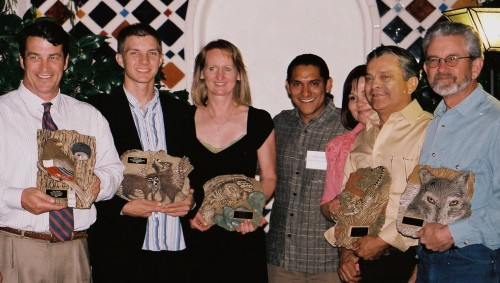Accidental residents: reddish egrets and green sea turtles
I’ve just returned from a visit to the parental home in coastal Orange County California, where my mother still lives. The house is walking distance from the beach — all during the Labor Day weekend, we could smell the beach fires and hear the engines of small planes dragging ad banners low along the coast.
 When I was a kid, the beach was where we went to “lay out” or body surf. Now, I’m more likely to head to the Bolsa Chica Ecological Preserve, also within a short walk, to look at birds. One of the last remaining wetlands in southern California, Bolsa Chica has been a battle ground for decades between developers, politicians, environmentalists, and citizens.
When I was a kid, the beach was where we went to “lay out” or body surf. Now, I’m more likely to head to the Bolsa Chica Ecological Preserve, also within a short walk, to look at birds. One of the last remaining wetlands in southern California, Bolsa Chica has been a battle ground for decades between developers, politicians, environmentalists, and citizens.
Though its current state is more stable than it was, it’s hard to believe the struggle is over, since the Preserve is still being hemmed in by huge showy homes looking down onto it from the bluffs on one side and clanking, chugging oil rigs on the other. But in between is a haven well-known to birds and birders, as well as families and walkers with (forbidden) dogs. The Preserve is in a constant state of change, not only from natural phenomena like tides and the weather, but also man-made: fairly recently a channel was constructed to open the water of the Preserve to the sea — a re-engineering of its natural daily access to fresh ocean water, instead of a sluggish exchange of greasy harbor water that worked its way through local marina channels.  Observers are still evaluating the effects of this. But the terns and Black skimmers still nest on the sandy island, endangered snowy plovers have nesting areas safe from foot traffic and vehicles, and the endangered Belding’s race of the Savannah
Observers are still evaluating the effects of this. But the terns and Black skimmers still nest on the sandy island, endangered snowy plovers have nesting areas safe from foot traffic and vehicles, and the endangered Belding’s race of the Savannah sparrow is sometimes ridiculously easy to see in the pickleweed. Small numbers of Least terns, also endangered, are harder to pick out from among the clouds of larger, skrekking Caspian, Elegant and Forster’s terns. Winter will bring ducks and grebes, and now in late summer, the shorebirds are returning, some, like a few of the dowitchers, still sporting shreds of buffy breeding plumage fresh from their arctic breeding grounds.
sparrow is sometimes ridiculously easy to see in the pickleweed. Small numbers of Least terns, also endangered, are harder to pick out from among the clouds of larger, skrekking Caspian, Elegant and Forster’s terns. Winter will bring ducks and grebes, and now in late summer, the shorebirds are returning, some, like a few of the dowitchers, still sporting shreds of buffy breeding plumage fresh from their arctic breeding grounds.
As havens often do, Bolsa Chica has attracted unexpected residents. For a couple of years now, birders have been watching a small number of Reddish egrets in the tidal flats — two that I know of — a species that is normally found in warmer regions. On the Bolsa Chica Conservancy‘s online bird list, the Reddish egrets rate only an “X” for “accidental”. They seem to know exactly what they’re doing, however, with their active  foraging dance in which they dart and hop, holding their wings above their head, snaking their long necks forward to snatch at small fish and invertebrates from the water at their feet. You’d expect to see these guys in Louisiana, or Mexico. But here they are doing what they do like they belong here, being spied upon by scopes and long lenses, among the resident Snowy and Great egrets and Great blue herons. Like immigrants everywhere, they are sometimes subject to competitive pecks and unwelcoming charges by the locals, in the form of irritable Great Blues whose personal space is compromised.
foraging dance in which they dart and hop, holding their wings above their head, snaking their long necks forward to snatch at small fish and invertebrates from the water at their feet. You’d expect to see these guys in Louisiana, or Mexico. But here they are doing what they do like they belong here, being spied upon by scopes and long lenses, among the resident Snowy and Great egrets and Great blue herons. Like immigrants everywhere, they are sometimes subject to competitive pecks and unwelcoming charges by the locals, in the form of irritable Great Blues whose personal space is compromised.
All of Southern California has a reputation for harboring incomers from other places. The Reddish egrets are only one example. Another, new to me as a non-resident, but apparently known to local fishermen and living here for a while, are Green Sea Turtles. A news story over the Labor Day weekend was the first I’ve heard of this: a Green sea turtle was rescued from where it was trapped in a dishcarge channel in the Haynes Generating Station on the grubby and channelized San Gabriel River. Check out the excellent LA Times article for the full fascinating story, but apparently there is a handful of these big turtles living at least part of their lives in the warm waters a short distance upstream  from where the San Gabriel empties into the Pacific at the border of LA and Orange Counties. Even more remarkable is that there is a large colony of these animals living in San Diego. This group numbers at least a hundred and, according to researchers, is headed up by a 570-pound matriarch they call “Wrinklebutt.” The theory is that the San Gabriel River turtle group is an outpost of Wrinklebutt’s colony. It makes them the northernmost known foraging population of Green Sea turtles in North America.
from where the San Gabriel empties into the Pacific at the border of LA and Orange Counties. Even more remarkable is that there is a large colony of these animals living in San Diego. This group numbers at least a hundred and, according to researchers, is headed up by a 570-pound matriarch they call “Wrinklebutt.” The theory is that the San Gabriel River turtle group is an outpost of Wrinklebutt’s colony. It makes them the northernmost known foraging population of Green Sea turtles in North America.
This coastal visit is well-timed for me artistically, bringing an influx of fresh ocean species, just at a time when I’m beginning work on pieces for the San Diego Bird Festival next March. So soon skimmers and terns and sea turtles will be migrating into Three Star Owl imagery, joining the desert species dwelling there already. And, maybe when I’m in San Diego, I’ll try to see Wrinklebutt and her cohorts.









